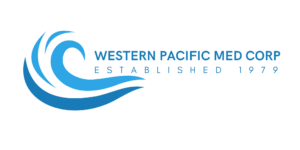
Advocates for Opioid Addiction Treatment
We are a national coalition of opioid treatment facilities committed to providing the highest quality of care to our patients by protecting and expanding access to medication-assisted treatment (MAT) for all Americans.
AOAT is dedicated to ensuring MAT options are safe and convenient, covered by Medicare, Medicaid and commercial insurers, and regulated in a manner that ensures highly-trained providers can provide the patient-centered care that is proven most successful for recovery.
AOAT members represent more than 700 Opioid Treatment Program (OTP) facilities and Office-Based Opioid Treatment (OBOT) practices across 46 states.
Our integrated health care teams and trained addiction specialists provide lifesaving care to more than 215,000 patients living with opioid use disorder (OUD) every day.
What are OTPs?
Opioid Treatment Program (OTPs) provide a full range of evidence-based MAT services through multidisciplinary teams made up of physicians, nurses, and counselors who specialize in opioid addiction and have experience, knowledge, and on-site resources to create individualized care plans to guide clinical decision making.
OTPs are highly regulated, highly structured, comprehensive OUD treatment programs that have the best record of helping patients achieve long-term recovery. OTPs are subject to rigorous oversight at the federal, state, and local levels—including SAMHSA, the DEA, state regulatory and Medicaid authorities and pharmacy boards. Unlike other treatment settings, each OTP facility must be continuously accredited by a SAMHSA-approved body.

Key Statistics
Nearly 87% of all U.S. adults live within 30 miles of an OTP.
A 2022 NIH study shows that take-home methadone can be safe and effective for stabilized patients when administered in conjunction with a comprehensive OTP treatment plan.
Opioid Treatment Programs have provided safe and effective medication-assisted treatment to millions of people for more than 50 years—saving lives, getting people back to work, reducing health care costs, and improving communities.

Effective treatment conducted in OTPs has been proven to lead 80% of patients to fully recover.
About OUD and MAT
Opioid use disorder (OUD) is a complex, chronic disorder with serious consequences (including high rates of overdose, unemployment, comorbidities, and death), which requires an evidence-based approach to treatment that gives patients the best chance of success.
Medication-assisted treatment (MAT) is the use of OUD medications—buprenorphine, naltrexone or methadone—in combination with counseling and behavioral therapies. It is the most effective therapeutic approach for treating people with OUD. 1, 2
An evidence-based approach to treatment for OUD includes:

Individualized diagnosis and treatment plan

Access to all FDA-approved medications (methadone, buprenorphine, naltrexone) as indicated by the treatment plan to help stabilize the patient’s physical addiction

Effective mental and behavioral health interventions delivered by trained addiction specialists

Case management and coordination with other providers and support services

Long-term recovery support services for relapse prevention
These medications are FDA-approved for the treatment of opioid addiction
Methadone
Extremely effective when used as part of a comprehensive program but limited to use in the highly regulated OTP environment because it is also very dangerous, can be diverted, and can lead to overdose and death if not closely monitored.
Buprenorphine
An opioid partial agonist that can diminish the effects of physical opioid dependency and lessen cravings and withdrawal symptoms. Buprenorphine has a low potential for misuse, but office-based practitioners must apply for a waiver from SAMHSA and undertake specialized training before they can prescribe and dispense it.
Naltrexone
Can be prescribed and administered by any licensed practitioner because there is no potential for abuse or diversion of Naltrexone. It is non-addictive, not an opioid, and does not cause withdrawal symptoms, and it works by binding and blocking opioid receptors in order to reduce cravings.
| Schedule II Drug | Patients can Receive Take Home Doses | Any Doctor Can Prescribe | High Potential for Overdose | |
|---|---|---|---|---|
| Methadone |  |  | ||
| Buprenorphine |  |  | ||
| Naltrexone |  |  |

1.27 million Americans receive MAT (2018)3
Advocates for Opioid Addiction Treatment Supports
- Safe and convenient access to MAT through appropriately regulated clinics, including mobile and satellite units
- Coverage by Medicaid, Medicare, and commercial payers at an adequate reimbursement rate
- Regulations to ensure patient and community safety in administering effective but powerful opioids
- Access to dedicated funding sources including federal and state grants and opioid settlement dollars to develop innovative models for serving patients without health insurance and in rural areas
- The ability for OTPs to admit patients via telehealth
Contact Us
Contact us using the form below or send an email to info@aoat.org.
1 McLellan AT, Arndt IO, Metzger DS, Woody GE, O’Brien CP. The Effects of Psychosocial Services in Substance Abuse Treatment. JAMA. 1993;269(15):1953–1959. doi:10.1001/jama.1993.03500150065028
2 Eren, Kemal PhD; Schuster, James MD, MBA; Herschell, Amy PhD; Loveland, David PhD; Neimark, Geoffrey MD; Mihalyo, Mark MS; Hurford, Matthew MD; Houck, Patricia MS; Ryan, Neal MD. Association of Counseling and Psychotherapy on Retention in Medication for Addiction Treatment Within a Large Medicaid Population. Journal of Addiction Medicine: 5/6 2022 – Volume 16 – Issue 3 – p 346-353
3 https://www.hhs.gov/opioids/about-the-epidemic/opioid-crisis-statistics/index.html






